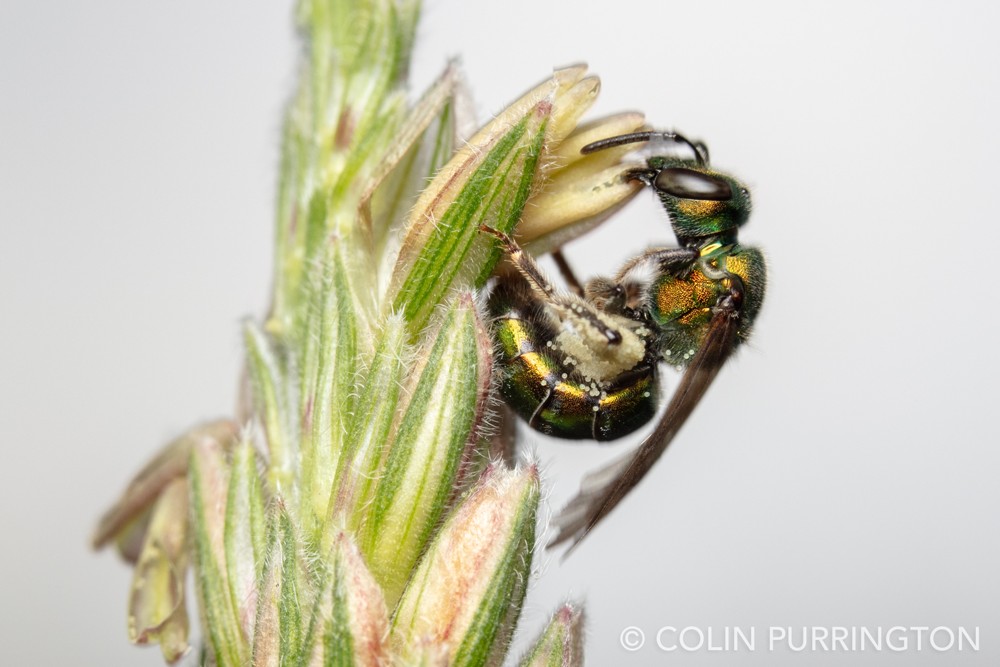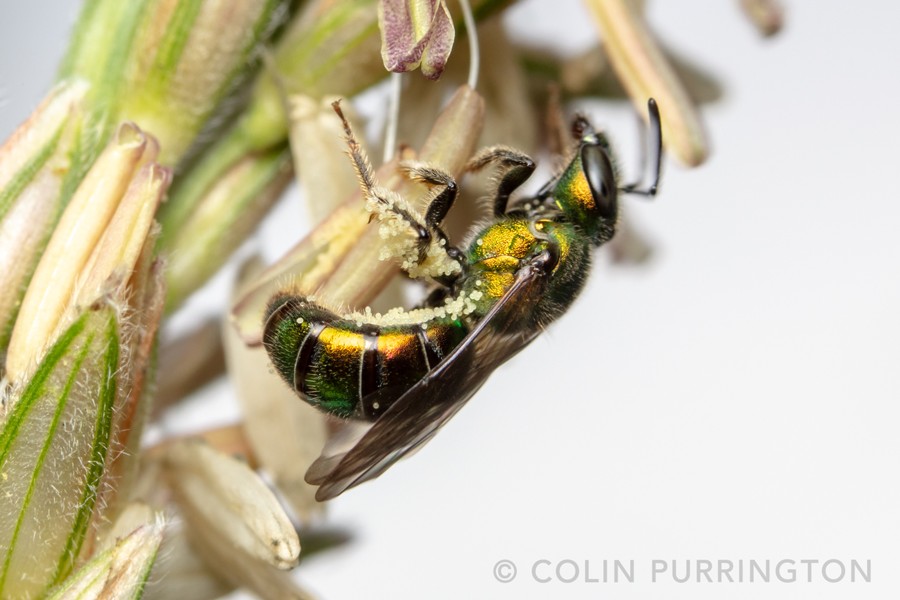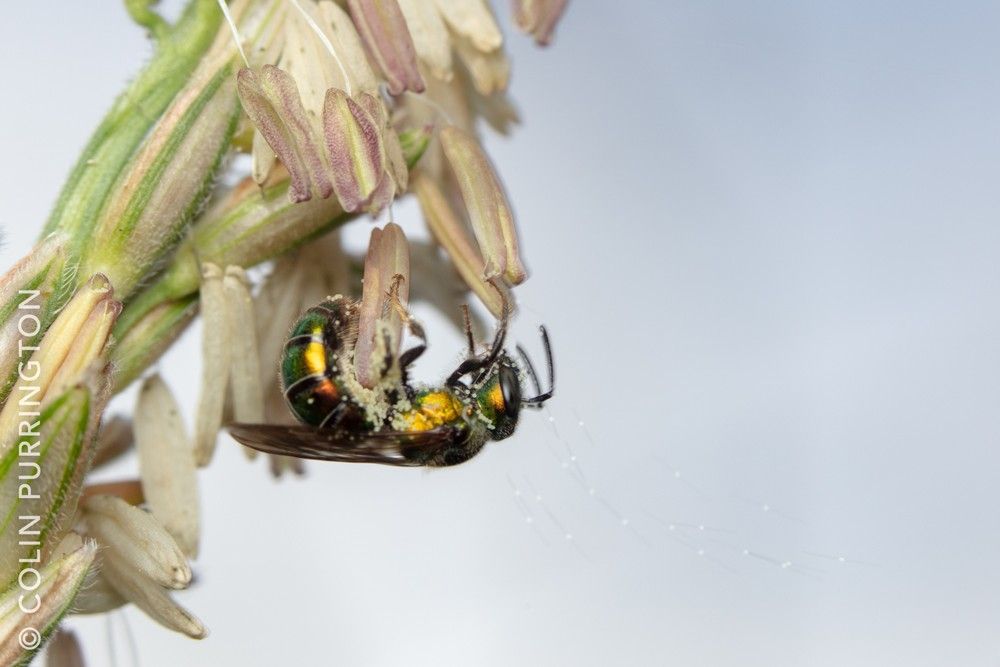Some photographs of Chelostoma philadelphi, the most common guest at my mason bee hotel in past years. Approximately 7 mm in length and all black unless covered in pollen. Seems to prefer nest holes that are 1/8″ in diameter. In looking at photographs online they seem to show up on a variety of flowers (perhaps with preference for asters), but females are reported (Sedivy et al. 2008) to collect only Philadelphus pollen for use in nest provisions for her brood.
Tag Archives: bee
Augochlora pura foraging for pollen on maize
Last week I found hundreds of pure green Augochlora (Augochlora pura) foraging for pollen on Zea mays at Stroud Preserve in West Chester, Pennsylvania. Here’s my favorite capture, which shows a bee cutting open an anther with her mandibles.
I was a tad surprised to see a wind-pollinated plant so mobbed with bees, but a later search of the internet suggested I shouldn’t have been. Even honey bees forage on corn, though the pollen is apparently not as desirable as other sources (e.g., Höcherl et al. 2011). This is also the reason why spraying a cornfield with insecticides can easily cause problems for any bees (and pollen wasps) that collect pollen.
This next photographs shows a better view of the scopa (modified hairs that hold the electrostatically-charged pollen) on the legs and abdomen. It also shows off how incredibly large corn pollen is (perhaps 85 microns, per some estimates, which is huge). Wind-pollinated plants with large pollen are odd.
The final photograph shows some pollen grains set in motion by the foraging bee. The odd look (line segments with bright dot in middle) are presumably caused by the flash freezing the fast-moving grains only in the middle of the exposure (1/200 of a second). I’m not exactly sure why the grains are bright. It could be because they are strongly backlit by sun, but it could be something related to how pollen grain exines bend light (they can cause a pollen corona on allergy-alert days). Someday it might be fun to get a rear-curtain flash configured to better capture such motion.








